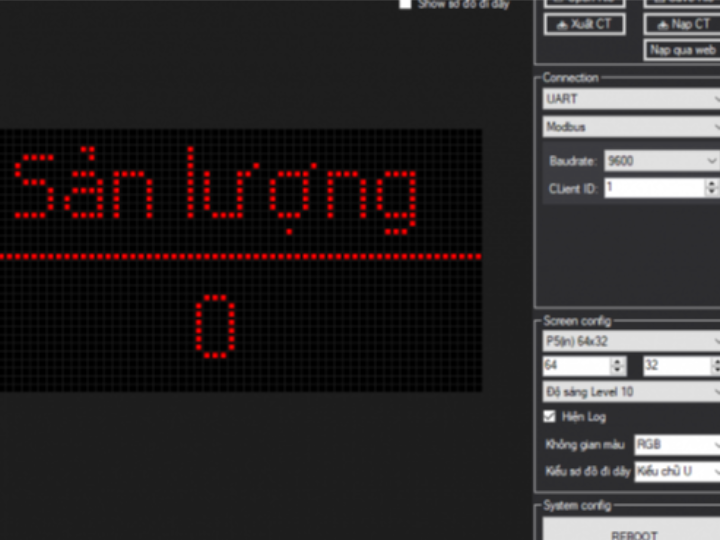Hub75 Studio – LED Matrix Display Design Platform Extended with WIZnet W5500 Ethernet
Hub75 Studio & Base Kit leverage WIZnet W5500 for 100 Mbps Ethernet, plus WiFi, 4G, RS485; GUI-based graphics, OTA, MQTT, HTTP, Modbus protocols.

Utilization of WIZnet W5500
The Hub75 Base Kit uses an SPI-connected W5500 module to provide 100 Mbps Ethernet with full hardware TCP/IP off-load, reducing MCU load and preventing SIM (4G) or RS485 module conflicts when W5500 is installed Tự học IoT, Lập trình nhúng.
Technology and Innovative Techniques
Hardware: Supports 4G, WiFi, 100 Mbps Ethernet, UART, RS485, one sensor input, Hub75/HUB12 output (~300 P10 32×16 panels), min 1 972 Hz refresh, 60–120 FPS Tự học IoT, Lập trình nhúng.
Software: Controls up to 350 P10 or 90 P5 panels, auto-remaps and detects panel configs, drag-and-drop GUI, OTA updates, mini web server; full support for MQTT, HTTP, UDP, Modbus, UART Tự học IoT, Lập trình nhúng.
System Flow
Power on → board creates WiFi AP “HUB75 BaseKit” (pw: 88888888).
Connect PC to AP → design layout in Hub75 Studio.
Select connectivity (Ethernet via W5500, WiFi, 4G, RS485, UART) and assign ValueDisplay addresses.
Click “Upload” → firmware/graphics sent via chosen channel → board updates.
Board scans LEDs via HUB75/HUB12 while updating ValueDisplays in real time via MQTT, HTTP, UDP, Modbus Tự học IoT, Lập trình nhúng.
Technical Synergy Analysis
TCP/IP Off-load: Hardware stack frees MCU for LED control, ensuring smooth frame rates.
Speed & Stability: 100 Mbps Ethernet with 80 MHz SPI enables low-latency, low-jitter dynamic content updates.
Modularity: Easy swap of W5500, 4G, RS485 modules allows flexible network setups per project needs.
Potential Applications & Ideas
Factory Info Displays: Real-time production KPIs and alerts.
Cloud-linked Digital Signage: Remote ad updates via MQTT/HTTP.
Parking Guidance Systems: Sensor-driven vacancy displays.
Transit ETAs: Real-time bus/train arrival boards via public APIs.
Multi-sensor IoT Dashboards: Unified monitoring of temperature, humidity, CO₂, etc., via ValueDisplays.
